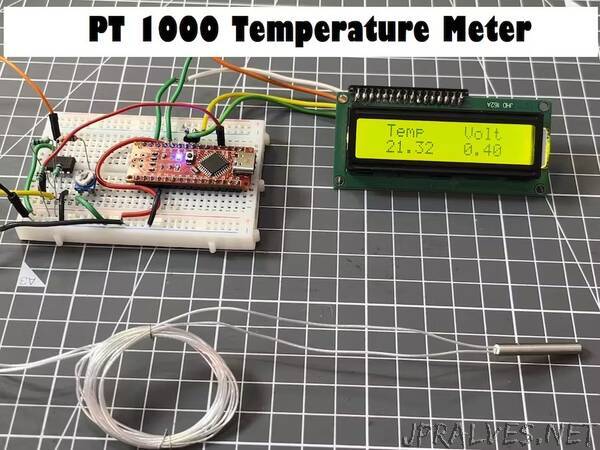
“Here is the small demonstration to the pt1000 based temperature sensor and how to use them with your projects. They are cheap and precise.
While working with my hot plate soldering project an idea comes into my mind. Why not to make a super simple are precision temperature sensor which can measure up to 500 degrees on a linear scale. There are many thermocouples, thermistor, NTC and PTC type of temperature measuring units available in market. But due to their nonlinear properties and lower temperature range measurement of hot plate cannot be done.
That’s why I came with a new sensor which is based on platinum thin wire. The resistance of any metal change with change in temperature. Which follows the basic phenomena, atom start vibrating more and retard the flow of electrons through them. The change in resistor can be linear or non-linear based on the material and properties. The basic features and resistance table of a PT1000 is given below.
Pt1000 sensors (1000-ohm temperature sensors):
They are the second most common type of platinum resistance thermometer. Pt refers to that the sensor is made from Platinum (Pt). 1000 refers to that at 0°C sensor has a resistance of 1000 ohms (Ω). The PT type of RTD is much most stable and precise (but also more expensive). PT1000’s is useful to measure temperature in laboratory and industrial processes; and have developed a reputation for accuracy (better than thermocouples), repeatability, and stability.
This high-temperature PT1000 sensor is equipped with a 316L stainless steel shield (try saying that five times fast!) that is good for up to 550°C.
Features:
- Based on resistance measurement principles.
- Resistor material is Platinum with a value of 1000 ohm at temperature 0°C.
- Platinum has a positive resistance-temperature factor; resistance increases with rising temperature.
- Resistance variation is a function of temperature: 3.85Ω/°C nominal.
- High accuracy and stability compared to thermocouples, silicon-based temperature sensors, or thermistors.”
